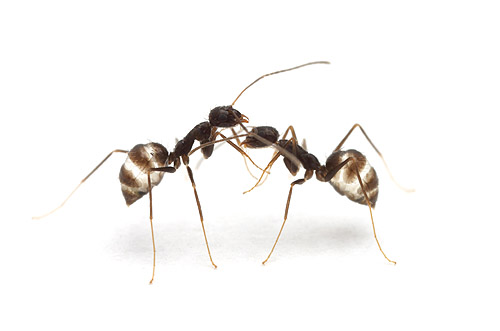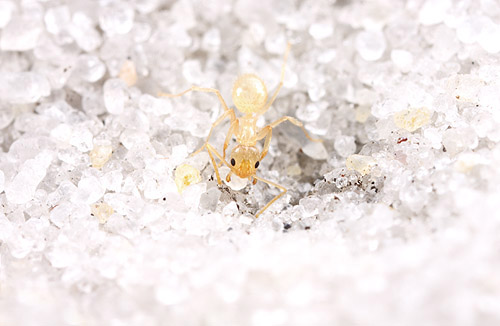What are ant taxonomists buzzing about this week?*
Well. A hot new paper by John LaPolla, Seán Brady, and Steve Shattuck in Systematic Entomology has killed Paratrechina as we know it. (more…)
Posted in Ants, Science, Taxonomy, tagged Ants, Evolution, myrmecology, Paratrechina, Taxonomy on January 9, 2010| 8 Comments »
What are ant taxonomists buzzing about this week?*
Well. A hot new paper by John LaPolla, Seán Brady, and Steve Shattuck in Systematic Entomology has killed Paratrechina as we know it. (more…)
Posted in Ants, tagged macrophotography, Paratrechina, Photography on August 12, 2009| 4 Comments »

Paratrechina longicornis
Florida
Their abdomens swollen with sugar water, two black crazy ants (Paratrechina longicornis) share a moment. This species has traveled around the globe with human commerce and is now common in warmers regions worldwide.
photo details: Canon mp-e 65mm 1-5x macro lens on a Canon EOS 50D
ISO 100, f/13, 1/200 sec, indirect strobe in a white box
Posted in Ants, Science, Taxonomy, tagged Ants, entomology, florida, Nature, Nylanderia, Paratrechina on June 25, 2009| 10 Comments »

Paratrechina Nylanderia phantasma
Archbold Biological Station, Florida
Here’s an ant I almost didn’t notice. Paratrechina Nylanderia phantasma is one of the least known insects in North America, active at night and restricted to a particular type of sandy soil in Florida. Workers are only a couple millimeters long and the color of sand. In the field they appear as ghostly little shapes skirting across the ground, scarcely visible even to those looking for them.
Incidentally, N. phantasma was named and described by James Trager, a frequent commentator here at Myrmecos Blog. Perhaps, if we’re really nice to him, James will tell us something more about this little ant.
[update 1/12/10, taxonomic change to Nylanderia]
photo details: Canon MP-E 65mm 1-5x macro lens on a Canon EOS 50D
ISO 100, 1/250 sec, f13, flash diffused through tracing paper
Posted in Ants, Blogging, Insect Links, Science, Taxonomy, tagged crazy ants, entomology, houston, invasive species, Paratrechina on May 21, 2008|
Scott Solomon, who researches fungus-growing ants, has a brief piece in Slate Magazine on the Paratrechina Crazy Ants invading Houston.
I’m not convinced that this ant is anything different from Paratrechina fulva, a common South American species and the oldest name in that species complex. People have been calling the Houston invader “P. cf. pubens“, but the taxonomy of the genus is so poor that it’s difficult to say anything with confidence. Do you folks who’ve looked at specimens (that’s you, James) have any thoughts about the identity of this ant?